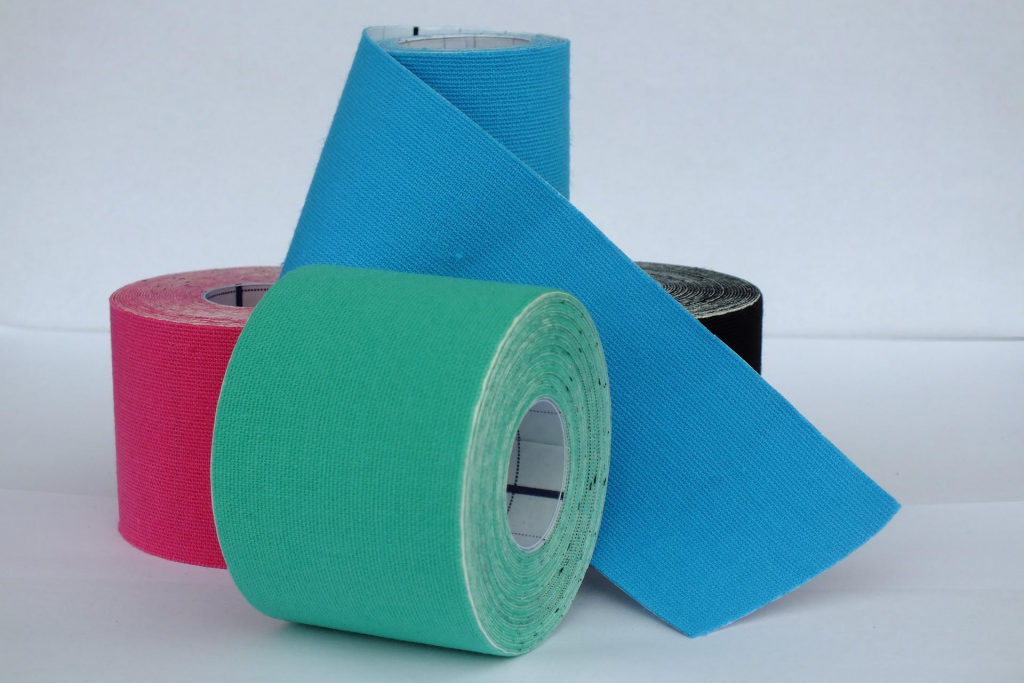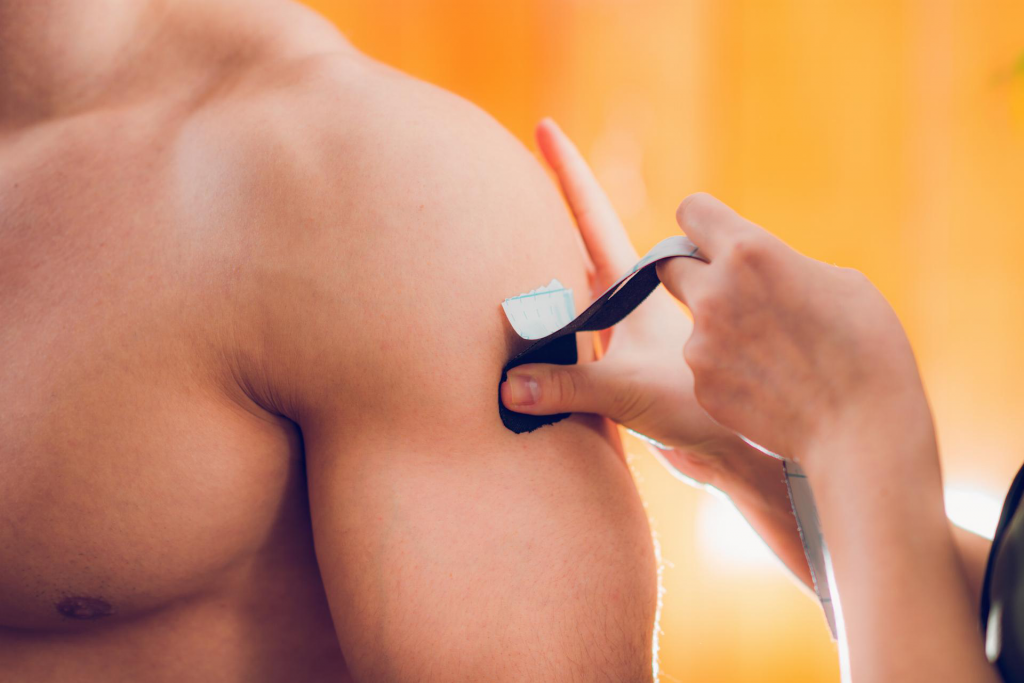Going to any gym locker room is a great place for learning. And no, it’s not about listening to war stories. It’s a chance to learn something about the sport you came to train.
Suddenly, a guy next to you takes a tape that resembles a velcro tape. He rolls it out, stretches it, and starts taping it on his body. It’s a colorful tape, and he puts it on his shoulder, back, and knee.
Your puzzled look is dispelled, as your buddy asks you if you have never seen an athletic tape.
What is athletic tape
Even though the athletic tape is superbly popular, it wasn’t invented in the last four years. Actually, it was invented by a Japanese chiropractor Kinzo Kase in the 1970s. However, it would take more than 30 years for this product to go mainstream when volleyball player Kerry Walsh used it at the Beijing Olympics in 2008.
Then, it came into mainstream use, and today you can see it pretty much everywhere. But, even though it’s so popular, it may be a bit complicated to understand its popularity.
People love how it looks, especially on those Instagram pics, but they rarely understand it’s full worth.
Athletic tape benefits
The true benefit of the athletic tape is that it puts pressure on certain points you wrap the tape around. So, let’s say you are feeling pain in your shoulder when you are lifting weights. It’s not a really sharp pain, and you can tell that you don’t need any physical treatment.
But, it would be so great if you could sanitize that bit of pain when you are doing shoulders and back exercises. You wrap the tape around the shoulder, tape it, and just like that, the pain is gone.
The muscle starts healing faster, the pain subsides, and you are good as new to continue working out like nothing ever happened. At least, that’s how you can bluntly describe what an athletic tape could do for you.
Now, let’s take a look at the separate benefits of athletic tape use.
Treating injuries
The athletic tape does wonders for small sprains and strains. If you feel like tightening a weak muscle could improve your performance you could just wrap some tape around a weak spot and improve your performance immediately.
However, there’s a disclaimer here. The tape can’t fix lacerations or breaks, but it can fix broken muscle tissue, and it can help to reduce inflammation.
The scenario you could use it in is if you have a sprain, like a shin split, or pain in your lower back from deadlifting. You would tape either shin or the lower back, and tape it tight.
Then, the pain would subside and you would be ready to continue working out. Eventually, the pain subsides and you trained through it all, withstanding the pain.
Yet, if this sounds too far-fetched, let’s take a look at a more common use of the tape.
Support weak zones
Ok, let’s say you hurt your ankle or knee. Now, you want to isolate those joints, and prevent them from causing you pain. That’s where the athletic tape becomes so handy.
You take some athletic tape, cut it, and wrap it around your ankle or a knee. You apply it so it tightens up the joint. Now, when you start working out, the weak zone will naturally become strengthened.
This, of course, doesn’t mean that you won’t feel anything. But, it’ll greatly reduce the stress on the joint, and let you feel more comfortable when you are twisting it. Also, it reduces swelling, and creates much-needed support for the joint.
Now, you can continue training as usual, and stop worrying about a potential injury, at least if you don’t overdo it. You should always take it step by step.
Re-educating muscles
Especially when you are coming back to training after you’ve suffered a serious injury. When that happens, you need to lean back into the training. You can’t just beast out and go full swing on your training. It’s obvious, you are going to feel a lot of pain.
Then, you want to adjust your muscles, and prepare them for the training. For example, if you broke your arm, or suffered an intense tear in the muscle tissue, you are going to wrap that area. After that, you’ll work out slowly, and regain muscle memory, while training that muscle.
Soon, you are going to feel much better, and the muscle tissue will recover at a much faster rate. That’s why professional sportsmen use the athletic tape.
Yet, with those more serious injuries, you should always contact medical professionals first. When they tell you that it’s ok to return to practice and use the tape, that’s when you should do it.
Still, there are situations when you can choose to use it on your own.
Enhancing performance
Let’s go to the beginning of our story for a bit. And, let’s say you returned to the gym next week with the athletic tape of your own. But, you aren’t feeling pain. You just want to max out on those deadlifts, and military presses.
Yet, for some reason, you always feel a bit of strain in the lower back when you do those two exercises. So, you tape the lower back and you tape those muscles around your shoulders where you feel the strain.
You warm up, prepare for the training, and kick it off. Finally, the time has come for those two exercises. Yet, you still don’t believe in it. One by one, you are doing the reps, and like you are swimming for the first time, start feeling comfortable in the new environment.
Then, you keep working out, and there’s no strain. You go back to the locker room, take off the tape, and head home. Tomorrow morning there’s no strain and no pain. And, that’s the other thing about the tape, it enhances your performance.
Push it to the limit
All that is left is to get the tape and start working out with it. Of course, it’s not a solution that fixes all ills.
But, it can alleviate the pain, and help you perform on another level. In a way, it’s a magic fix that will help you get the gains, and when you feel you can’t pull through. Don’t waste a day you could spend working out. You don’t have to anymore.










